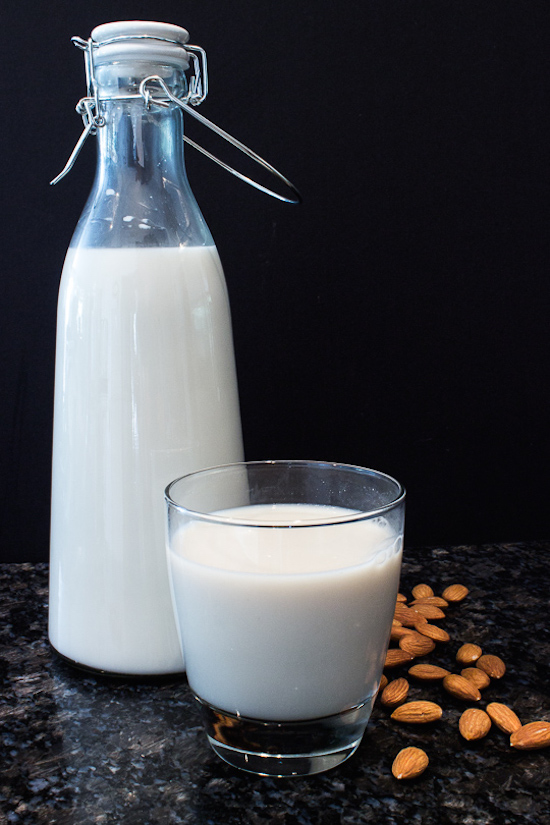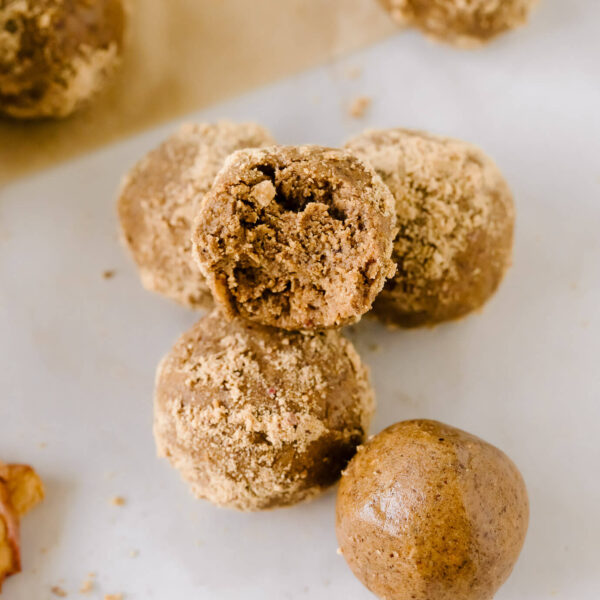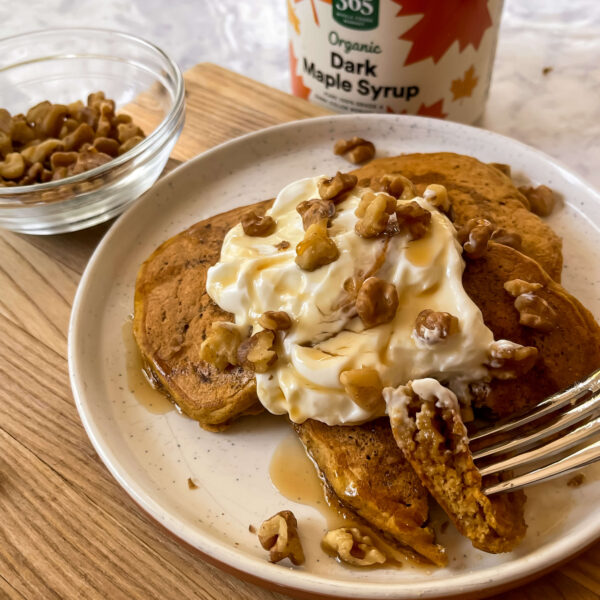Ever since I was little I have had an aversion to dairy milk. This avoidance has lead me to discover my preference for nut-based milks and products. While I have not found one I do not particularly like, my longstanding favorite is almond milk, with my more recent favorite, cashew milk. For years I have been drinking almond milk as a dairy alternative and substituting it as an ingredient whenever a recipe calls for milk. It was not until recently recently that I’ve started making my own, and I must say I am glad I made the switch.
There really is nothing comparable to homemade almond milk. It’s light and refreshing with hints of a sweet nuttiness. Now don’t be intimidated. Homemade almond milk (or any nut milk for that matter) is surprisingly easy to make. It simply consists of soaking, blending and straining. Once you’ve taste fresh, ice cold homemade almond milk you may never purchase store-bought almond milk again.
Almond Milk Nutrition
Almond milk is a great dairy-free alternative to cow’s milk. It is easy to digest, can reduce bloating, and therefore an alternative for those who lactose intolerant or sensitive to dairy. Almond milk has less calories (roughly 60 kcal per 1 cup compared to 80 kcal per 1 cup of skim milk) and carbohydrates (1 g of carbs compared to 12 g of carbs in cow’s milk) than cow’s milk. Almond milk also contains heart-healthy poly- and monounsaturated fats and is also free from saturated fat, trans fats and dietary cholesterol, unlike cow’s milk. While almond milk is a good source of nutrients, it is not a good source of protein and calcium, as is cow’s milk. But don’t let that stop you! There are plenty of plant-base protein and calcium sources that can supply you with adequate amount of protein in your diet.
Check out this post from Daiya Foods on good sources of non-diry calcium. Also, if you have questions about how much protein you need or want to know if you are getting enough, contact me for a one-on-one consult!
Guide to Making Almond Milk
Homemade almond milk is as as easy as one, two, three — soak, blend, strain. While it does take take a little planning since soaking is involved, the taste is completely worth it.
After soaking the raw almonds in the refrigerator overnight (6-8 hours) or using a quick soak method of placing the almond in boiling water for 30 minutes to an hour.
Strain and rinse the almonds, than place in a high speed blender with filtered water. I typically use 4 cups of water to 1 cup of almonds. This produces a milk with the similar consistency of 1% milk. For a creamier milk, simply use less water. After blending, pour the milk into nut milk bag (I use a flour sack towel) that is sitting in a large bowl. Holding the bag above the bowl, let the the milk drain and then gently twist the remaining milk out.
What you are left with is the almond pulp. But DON’T THROW THIS AWAY! This can be added to muffins, oatmeal, smoothies, cookies, etc. You can make almond flour by placing it in a dehydrator or oven at 200F until completely dry (about 2-4 hours) and then blending it into a fine powder.
Enjoy this delicious homemade almond milk however you please, I recommend serving it with my Walnut Fig Granola, Breakfast Muesli, or simply enjoying it fresh from the fridge!
Homemade Almond Milk
Incredibly simple recipe for homemade almond milk that will have you never buying store bought again.
Makes 4 cups
Ingredients:
-
1 cup raw almonds
-
4 cups of water
Optional:
-
1/8 tsp salt
-
1 tsp pure vanilla extract
-
2 medjool dates, pitted
INstructions:
-
Place almonds in jar and cover with water. Let them soak in the fridge overnight (6-8 hours).
-
Rinse and drain pre-soaked almonds in a strainer. Add the almonds to a high speed blender with 4 cups of water. Blend until combined (about 1 minute). Place nut bag (or flour cloth) over a large bowl. Slowly pour the milk into the bag and tie the top. Holding the bag over the bowl, gently twist out the remaining liquid. Transfer the filtered almond milk into a glass jar or pitcher and place in the fridge for 3-5 days. Remember to shake or stir before drinking. Almond milk tends to separate, especially if peeled almonds are used.
If you are adding dates, place them in the blender with the almonds. The other additions can be added after the milk has been filtered.
Make sure to follow Nourished by Nutrition on Instagram. If you make this recipe tag #nourishedbynutriton so I can see what you have made and feature you!












I would also love to know the nutrition facts from this recipe. Thanks :)
I “3rd” the desire for the nutrition facts. I get such mixed information online regarding the calorie makeup of nut milks. It would be nice to know. :)
Can you tell me the calories, fat, protein break down per serving for the almond milk?
Thank you so much for the recipe / method to make almond milk!
How sweet is the almond milk? I typically have bought the sweetened, but finally read the sugar on the label. Ouch! Would adding some monkfruit erythritol granular or powdered work with this recipe?
Thank you again!
Michael
[…] Nut milk is a great dairy-free alternative to cow’s milk. It is easy to digest, can reduce bloating, and therefore an alternative for those who lactose intolerant or sensitive to dairy. Nut milk has fewer calories (roughly 60 kcal per 1 cup compared to 80 kcal per 1 cup of skim milk) and carbohydrates (1 g of carbs compared to 12 g of carbs in cow’s milk) than cow’s milk. Nut milk also contains heart-healthy poly- and monounsaturated fats and is also free from saturated fat, trans fats and dietary cholesterol, unlike cow’s milk. While almond milk is a good source of nutrients, it is not a good source of protein and calcium, as is cow’s milk. But don’t let that stop you! There are plenty of plant-based protein and calcium sources that can supply you with an adequate amount of protein in your diet. (based on nourishbynutition) […]
Thank you so much for this nutritional information!
Is that for store bought almond milk? The calories you listed seem a bit low, even considering the nutritional loss from the almond pulp.
[…] 1. Almond Milk from Nourished by Nutrition […]
Nice article, thanks! I’m yet to find any website giving specifics of macro nutrients and mins for home made almond milk done the way you (and I) do it. I use the milk as well as the okara though so ultimately that results in the same nutrients from this as from regular whole alms I suppose. Btw, I often add buttermilk culture to the almond milk and in about 10 hours at room temp that results in real tasty fermented alm milk.
I’m so happy you found the article helpful! Your addition or buttermilk culture sounds delicious. I’ve never had fermented almond milk!
[…] or cashew is one of the easiest first steps to take towards eating more plant-based. You can easily make your own using a blender and straining with a nut-milk bag. (Out of all the bags I’ve used, my favorite is […]
[…] Almond Milk from Nourished by Nutrition […]
[…] Soaking nuts may be beneficial for some individuals because they become easier to digest. Also, by soaking nuts, you are ready to go to make your own nut milk. Try my recipe for Homemade Almond Milk. […]
Yum, I love homemade almond milk too! Great pics and tutorial, Jess!
Thanks Glynnis! I really can’t get over how much better it tastes and how easy it is to make!